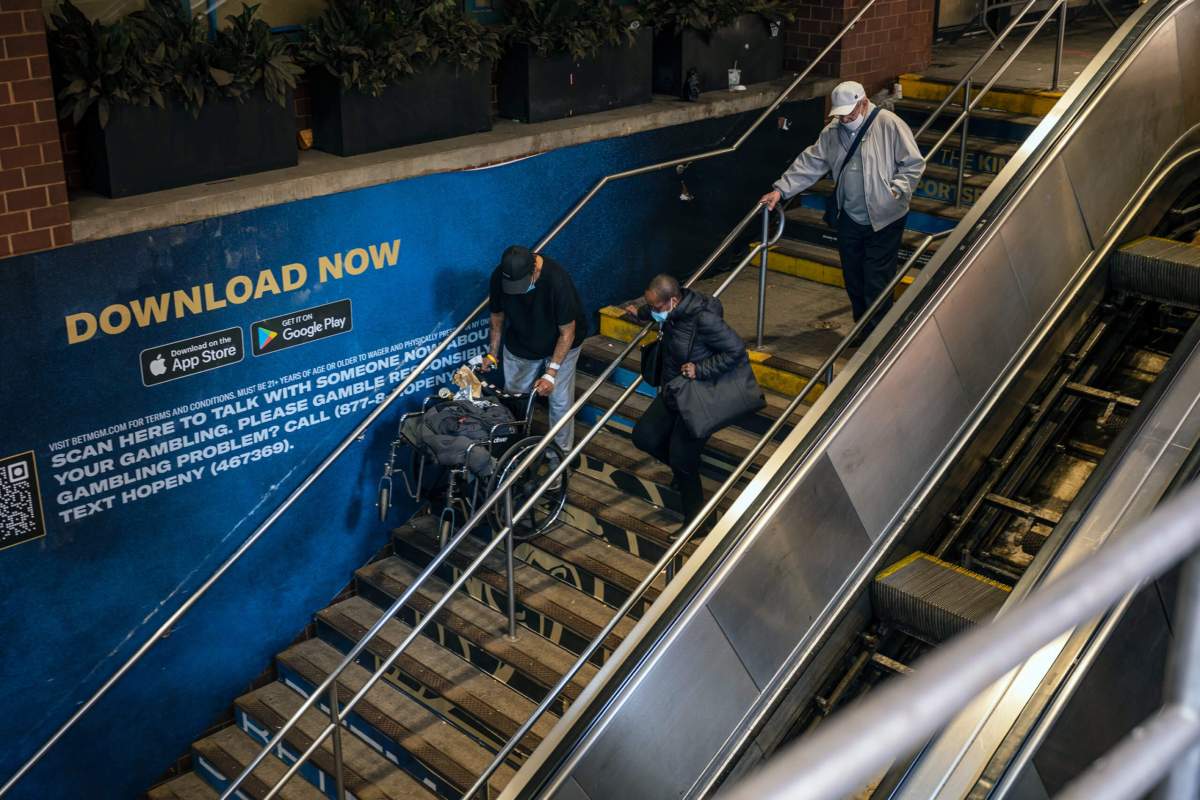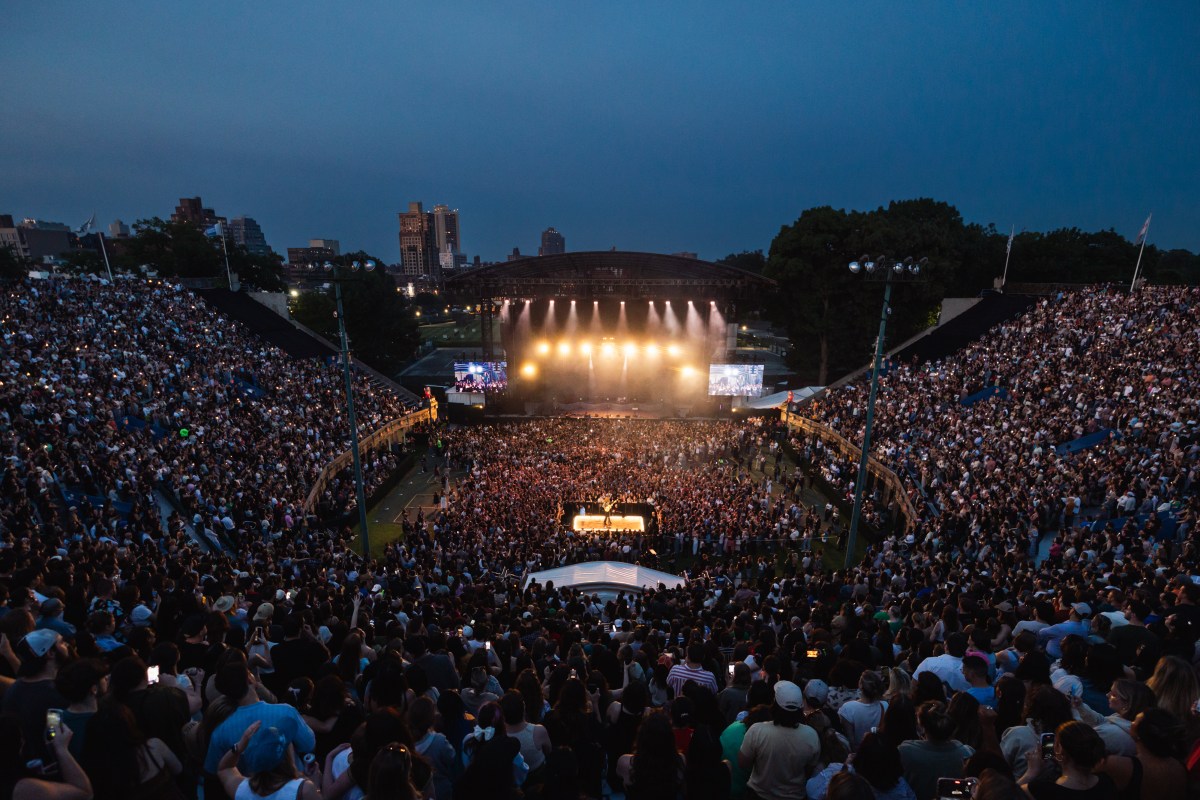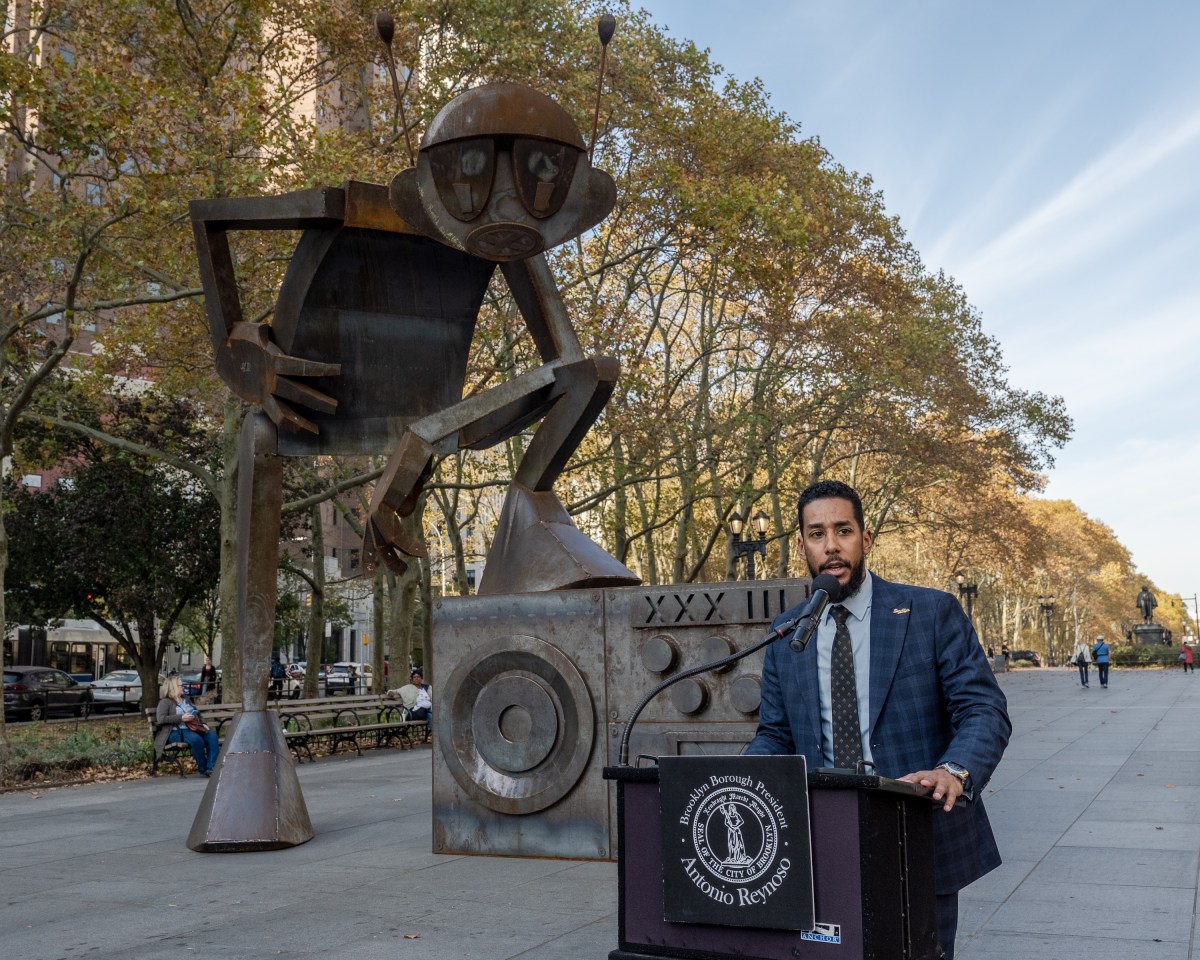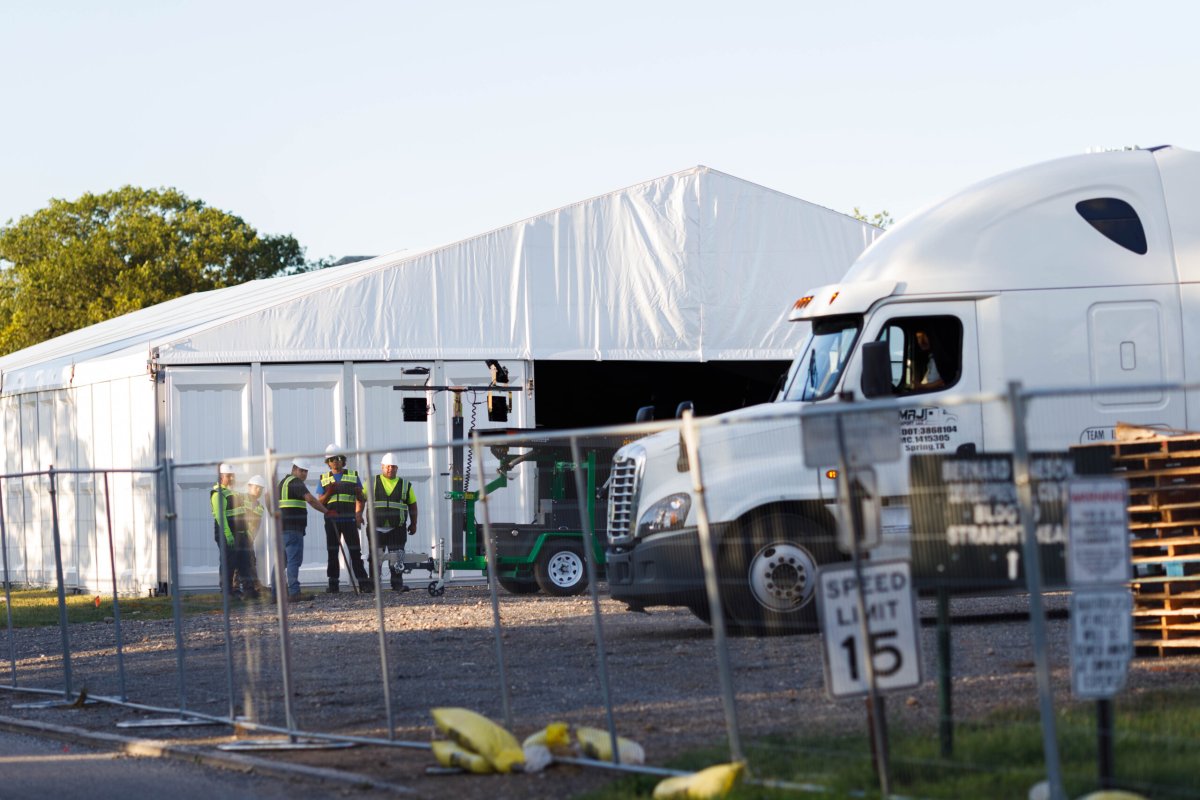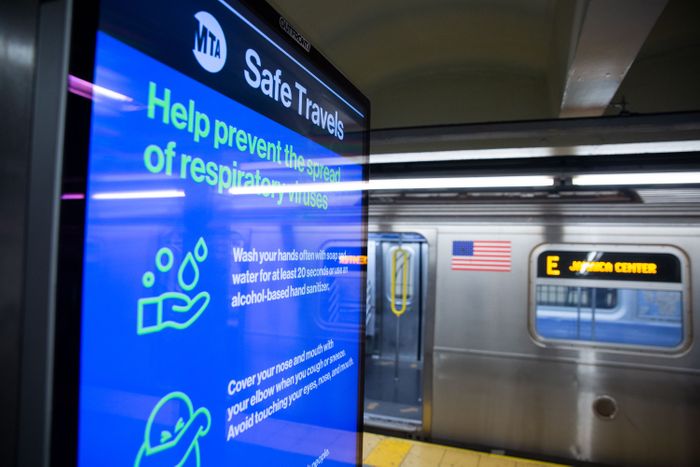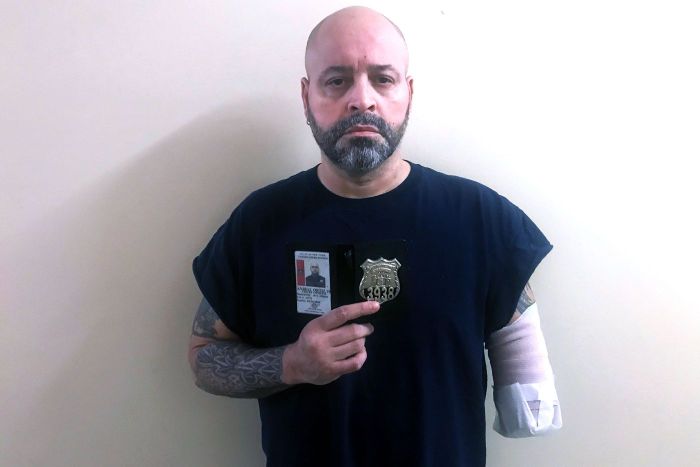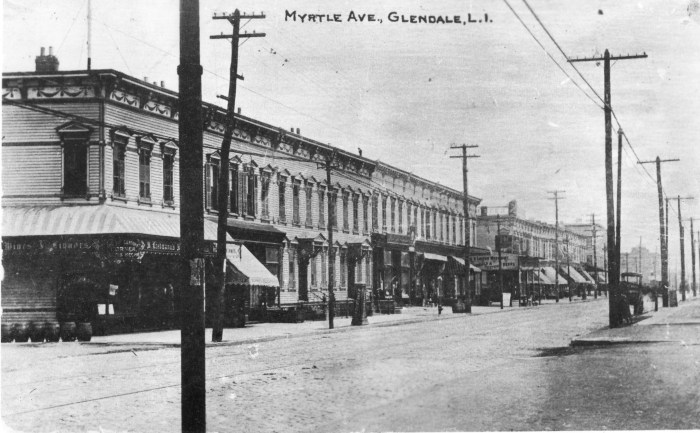This article was originally published on by THE CITY
The entrance on the southeast side of the square has one of the systems’ least reliable escalators and is an assault on the senses.
At Zeckendorf Towers, the 29-story condominium building on the southeast side of Union Square, a one-bedroom rental is listed for more than $6,000 a month and apartments are on the market for as much as nearly $3.4 million.
Downstairs, however, at a station entrance reeking of urine, subway riders have had to trudge on stairs past escalators that have been out of service for much of the year — earning the landlord the latest in a string of violations and four-figure fines.
“I’m homeless, and I wouldn’t sleep over there,” said Sureno Williams, 45, who was smoking a cigarette by the entrance last week.
The 14th Street entryway to the fourth-busiest subway station in the city and its two escalators are maintained by Zeckendorf, a 645-unit residential building whose 1987 opening helped lead Union Square’s transformation from shabby to chic.
But the grimy gateway, along with MTA statistics documenting that the escalators have been among the worst-performing in the subway system for years, point to the problems the transit agency faces with private property owners in charge of upkeep at approximately 150 entrances throughout the 472-station network.
There are 42 privately maintained escalators and 56 privately maintained elevators in the subway. In contrast, New York City Transit is in charge of 233 escalators and 294 elevators.
Falling Down
The upkeep requirements for the entrance and the machinery at the 14th Street-Union Square station grew out of a zoning deal that dates back to 1985: The City Planning Commission gave developer Bill Zeckendorf a bonus of 153,006 square feet in exchange for building stairway entrances into the station at 14th and 15th streets, keeping the escalators at 14th Street in working order and providing an elevator shaft, according to city records.
But from April 2021 to this March, MTA numbers show one escalator there was out of service 72% of the time and the other had an availability rate of just 30%.
For the first three months of the year, the mechanical stairs identified as ES258X were out of service more than 98% of the time — the machine’s worst quarter on record (since 2015), according to MTA figures — while the second escalator was down nearly 80% of the time.
“I throw the walker over my shoulder and then I have to hope they finally fix these escalators,” said Maria Ramos, 54, after she helped guide an elderly man down into the station. “I don’t want to fall down the stairs.”
The MTA said the escalators are having their handrails and step chains replaced, and that Zeckendorf Towers is also responsible for keeping its station entrance clean as part of the zoning bonus from the 1980s.
A sign by the entrance says the escalators “are the property of Zeckendorf Towers” and that concerns should be directed to the property manager’s office. Maxwell-Kates Inc., which manages the building, did not respond to requests for comment.
“The MTA has been actively communicating with the owner to ensure that they are in accordance with their contract with the MTA and with city regulations regarding maintenance and safety,” spokesperson Joana Flores told THE CITY.
A Department of Buildings spokesperson said the Zeckendorf escalators are supposed to be back in service by Friday. That comes after building management was issued two violations in February for failure to maintain them. The violations carry a maximum penalty of $12,500.
Andrew Rudansky, the DOB spokesperson, told THE CITY that the owners are also facing a $6,250 fine for a violation related to the escalators that was issued January 19 of this year.
Four escalator violations were additionally issued January 5, 2021, June 16, 2020 and March 15, 2019, for fines totaling $4,375, he said, adding that those penalties have been paid.
“If the property owners do not restore the escalators to safe working service and properly maintain the devices, they will be subject to additional enforcement actions,” Rudansky said.
Private Escalators Usually Better
MTA figures show that the 10 subway escalators with the best 24-hour availability rates (100%) between last April and last month are all privately maintained. That includes moving stairs at Fulton Center, Lexington Avenue/51st Street and 42nd Street-Grand Central.
In contrast, the escalators at 14th Street-Union Square were the only privately maintained ones among the 10 least reliable in the entire system.
“It’s always something — you got bums peeing over here and old people taking the stairs instead of the escalator,” said Shawana Moore, 41, a bricklayer who commutes through the station daily. “It’s an embarrassment.”
 Hiram Alejandro Durán/THE CITY
Hiram Alejandro Durán/THE CITYJeff Peters of the Center for Independence of the Disabled New York said the organization regularly receives complaints about privately maintained subway entrances that are closed, inaccessible or dirty.
“Private entities that are tasked with maintaining subway entrances must follow through on their promise of maintaining them,” said Peters, whose office is just south of Union Square. “We cannot wait until the station or equipment falls into disrepair and they are forced or shamed into taking action.”
Jessica Murray, part of the Elevator Action Group in the nonprofit activist collective Rise and Resist, said the city and the MTA need to strengthen contracts with private developers who receive incentives in exchange for upkeep of subway escalators and elevators.
“It seems like the city needs to step in and try to extract that value back if [building owners] are not really keeping up with their end of the bargain,” she said. “Something needs to give.”
THE CITY is an independent, nonprofit news outlet dedicated to hard-hitting reporting that serves the people of New York.



